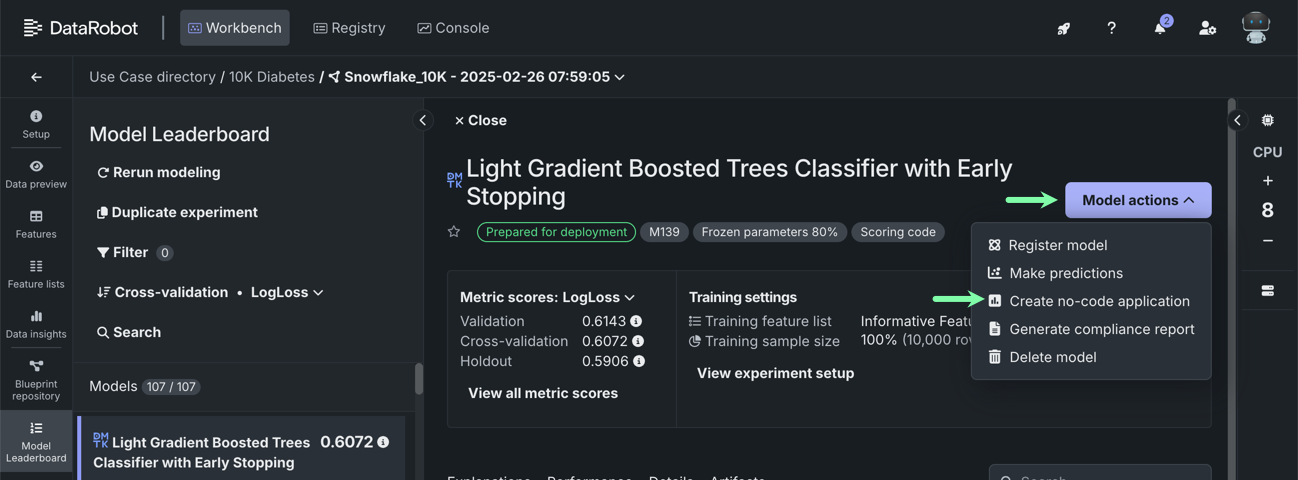Applications¶
Use this page to learn about the various application offerings available from DataRobot.
What are applications?¶
DataRobot offers various approaches for building applications that allow you to share machine learning projects: custom applications, application templates, and no-code applications.
The use cases and availability of each application type are described in the tabs below:
Custom applications are a simple method for building and running custom code within the DataRobot infrastructure. You can customize your application to fit whatever your organization's needs might be—from something simple, such as tailoring the application UI to a specific design, or something more robust. Custom applications can also be built with or without a deployed model.
DataRobot also offers the ability to create custom applications using one of the out-of-the-box, front-end templates that accelerate development. These templates, with offerings such as Streamlit, Flask, and a Slack app, are also customizable to your preferences.
Available from: Registry > Applications
Use application templates to launch an end-to-end DataRobot experience. This can include aspects of importing data, model building, deployment, and monitoring. The templates assist you by programmatically generating DataRobot resources that support the use case. Application templates are customizable and consist of multiple components.
Note that the end result of an application is a custom application, meaning, after setup, you can access the application from Registry.
Available from: Workbench > Browse application templates
No-code applications are used to visualize, optimize, or otherwise interact with a machine learning model. They enable core DataRobot services without having to build and evaluate models. No-code applications are not customizable, they require deployment, and they consist of a single component.
Available from: Workbench experiment > Model Leaderboard > Model actions > Create no-code application


